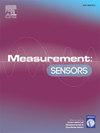PCA and PSO based optimized support vector machine for efficient intrusion detection in internet of things
Q4 Engineering
引用次数: 0
Abstract
The Internet of Things (IoT) is a network that interconnects many everyday objects, including computers, televisions, washing machines, and even whole urban areas. These devices has the capability to collect and disseminate information because to their integration of electronics, software, sensors, and connectivity to a network. The Internet of Things enables the remote sensing, identification, and control of physical things via the utilisation of existing network infrastructure. By using this function, it becomes feasible to integrate elements of the physical world into computerised systems, resulting in enhanced levels of efficiency, precision, and financial profitability. The Internet of Things (IoT) encompasses a diverse array of applications. The Internet of Things (IoT) may be used in several sectors such as healthcare, smart cities, smart homes, transportation, logistics, agriculture, and smart traffic management. The quantity of Internet of Things (IoT) devices is increasing rapidly and exponentially. The surge in numbers is accompanied by a significant escalation in security vulnerabilities. This article presents the development of an intrusion detection system for the Internet of Things using machine learning and feature selection techniques. The system aims to accurately categorise and forecast attacks on IoT devices. This approach utilises the publicly accessible NSL KDD dataset as its input dataset. During the data collecting process for NSL-KDD, all symbolic qualities are transformed into their corresponding numerical representations. Conversely, all numerical features are translated back into symbolic form at the conclusion of the procedure. Principal component analysis is employed to achieve the objective of attribute extraction. After completing the preparation step, the data set is classified using several machine learning techniques such as support vector machine, linear regression, and random forest. Evaluating the veracity, exactness, and retrieval rate of different machine learning algorithms is crucial for choosing the most effective ones. The accuracy of the Intrusion Detection System (IDS) based on Particle Swarm Optimisation (PSO) is 98.5 percent. The PSO-based SVM method is shown superior performance compared to random forest and linear regression methods in terms of precision, recall, and specificity.
基于PCA和粒子群算法的物联网入侵检测优化支持向量机
物联网(IoT)是一个连接许多日常物品的网络,包括电脑、电视、洗衣机,甚至整个城市地区。这些设备具有收集和传播信息的能力,因为它们集成了电子设备、软件、传感器和网络连接。物联网通过利用现有的网络基础设施,实现对物理事物的遥感、识别和控制。通过使用这一功能,将物理世界的元素整合到计算机化系统中变得可行,从而提高了效率、精度和财务盈利水平。物联网(IoT)包含各种各样的应用程序。物联网(IoT)可用于多个领域,如医疗保健、智慧城市、智能家居、交通运输、物流、农业和智能交通管理。物联网(IoT)设备的数量正在迅速呈指数级增长。数量的激增伴随着安全漏洞的显著升级。本文介绍了使用机器学习和特征选择技术开发的物联网入侵检测系统。该系统旨在准确分类和预测对物联网设备的攻击。这种方法利用可公开访问的NSL KDD数据集作为其输入数据集。在NSL-KDD的数据采集过程中,所有的符号性质都被转换成相应的数值表示形式。相反,在程序结束时,所有数值特征都被转换回符号形式。利用主成分分析实现属性提取的目的。在完成准备步骤后,使用支持向量机、线性回归和随机森林等几种机器学习技术对数据集进行分类。评估不同机器学习算法的准确性、准确性和检索率对于选择最有效的算法至关重要。基于粒子群优化(PSO)的入侵检测系统(IDS)的准确率为98.5%。与随机森林和线性回归方法相比,基于pso的支持向量机方法在精度、召回率和特异性方面表现出优越的性能。
本文章由计算机程序翻译,如有差异,请以英文原文为准。
求助全文
约1分钟内获得全文
求助全文
来源期刊

Measurement Sensors
Engineering-Industrial and Manufacturing Engineering
CiteScore
3.10
自引率
0.00%
发文量
184
审稿时长
56 days
 求助内容:
求助内容: 应助结果提醒方式:
应助结果提醒方式:


